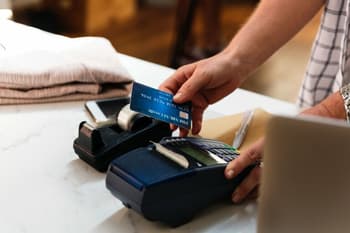An online marketplace facilitates the interaction between providers or sellers of goods and services and users who want to purchase those goods and services. When setting up an online marketplace, you need to consider the payment methods available to users of the marketplace. Many marketplaces have payment functionality directly on their platform and of those, some marketplaces will use credit card pre-authorisation. Pre-authorisation temporarily holds onto the user’s funds in the payment process to ensure the payment can be processed at a later time. This article will discuss:
- how pre-authorisation works;
- how to use pre-authorisation;
- what your terms and conditions need to cover; and
- the benefits of pre-authorisation.
How Credit Card Pre-Authorisation Works
Some online marketplaces, such as Facebook or Gumtree, provide a meeting point for providers and users, and payment happens externally to the marketplace. Other online marketplaces act as an intermediary and facilitate the payment transaction between the parties. If your marketplace wants to facilitate payment, your marketplace will need a payment acceptance solution. One viable option is to accept payment through pre-authorisation. Your site may have the software to allow pre-authorisation to happen or use a third-party payment processor or payment gateway that supports this feature.
The pre-authorisation process usually looks something like this:
- when a customer makes a booking request or purchase, you will collect their card details;
- a specific amount is placed on hold, such as $50. Your payment gateway might use different terminology and may not necessarily use the word ‘pre-authorisation’;
- the hold may last for several days, during which time the money is reserved and cannot be spent by the user; and
- at the end of this time, the amount is charged to the card, and the payment is completed, or the pre-authorisation is cancelled, and the amount is released back to the user if the payment did not need to go ahead.
How to Use Pre-Authorisation
You can use pre-authorisation for two main reasons.
1. Check Credit Card Validity
Many businesses use pre-authorisation to validate that a card is chargeable. This ensures the credit card is valid and has the appropriate amount of credit available. For example, a car share business could take a pre-authorisation charge of $250. This is not necessarily the payment to rent or share a car but to ensure the validity of the card someone uses when they sign up. This amount is then returned to the user.
2. Hold a Booking or Service and Reserve Funds
Pre-authorisation can ensure a booking for a user is held and ensures that the provider receives payment at the appropriate time, such as at the start or end of the service. For example, a medical practitioner may place a pre-authorisation charge of $100 to ensure the card is valid and those funds are reserved. However, the funds will not be withdrawn from the credit card to pay the practitioner until the service is provided.

It’s now easier than ever to start a business online. But growing and sustaining an online business requires a great deal of attention and planning.
This How to Start an Online Business Manual covers all the essential topics you need to know about starting your online business.
The publication also includes eight case studies featuring leading Australian businesses and online influencers.
How is Pre-Authorisation Different to Holding Funds in Escrow?
Importantly, pre-authorisation is different from holding funds in escrow. For example, some businesses use a type of escrow. In this setup, once a user makes a booking, the funds are:
- removed from the user’s account;
- held in an escrow account; and
- either released back to the user or paid to the provider, depending on the service outcome.
Pre-authorisation, on the other hand, temporarily reserves the funds and does not remove the funds from the user’s account.
There are many payment structures available for marketplace owners, and each comes with benefits and risks.
Using pre-authorisation is a common practice in the travel and rental industries.
Pre-authorisation not only ensures a card has funds and is valid but also guarantees payments from users to providers. This can give a provider reassurance before they proceed with providing service since they know they will receive payment as the user has passed the financial verification step.
All parties in a marketplace transaction want to ensure that payment happens at the appropriate time. The appropriate time could be:
- when booking the service;
- on the ‘first day’ of the service; or
- when the service is complete.
Terms and Conditions
Your Marketplace Terms and Conditions (T&Cs) is the legal agreement between your:
- platform;
- buyers; and
- providers or sellers.
If you use pre-authorisation, your T&Cs need to set out in the payment clause how this process works.
Key elements for your T&Cs include:
|
Use of a Third Party Payment Processor |
If you use a third-party payment processor such as Stripe or Paypal as your payment method, your users and providers may be subject to those processors’ terms and conditions in addition to yours. As a result, you should prompt your users to review these third-party terms. |
|
Amount of money taken |
The pre-authorisation should be for amounts that you set out on the listing when the customer makes the booking request. If the fee varies from what was pre-authorised, the customer must be made aware before they are charged. For example, if the pre-authorisation were for an hour of work, but the project took two hours to complete, the customer would need to be made aware of the altered charge. |
|
Acceptance or rejection of the payment |
Clarify the process your business uses within your Terms, as some providers may want to review booking requests. At that point, they will either accept the payment or reject it (and release the money back to the user). Other providers will allow for instant bookings and process the payment instantly, rendering pre-authorisation unnecessary. |
|
Timeframe |
The pre-authorisation will only be for a certain number of days, but it may take longer for the bank to return the money to the user. The user should be informed of this within your Terms. |
Benefits of Pre-Authorisation
There are notable benefits to using credit card pre-authorisation in your online marketplace:
- providers do not incur the cost or inconvenience of a user who does not pay or chase up a debt;
- it creates trust, as providers and users are confident that payment will be made at the right time;
- avoiding certain payment or transaction fees if the pre-authorisation is rejected and payment is not made;
- it reduces the administrative burden of cancellations and refunds; and
- it can improve user satisfaction by making the booking and purchasing process more streamlined.
Key Takeaways
Credit card pre-authorisation is one way of facilitating the interaction between providers and users on your online marketplace. It is one of many payment structures available and can certainly bolster confidence in your platform, particularly from the perspective of providers.
If you have questions about how to structure payments in your marketplace, our experienced e-commerce lawyers can assist as part of our LegalVision membership. For a low monthly fee, you will have unlimited access to lawyers to answer your questions and draft and review your documents. Call us today on 1300 544 755 or visit our membership page.
We appreciate your feedback – your submission has been successfully received.











